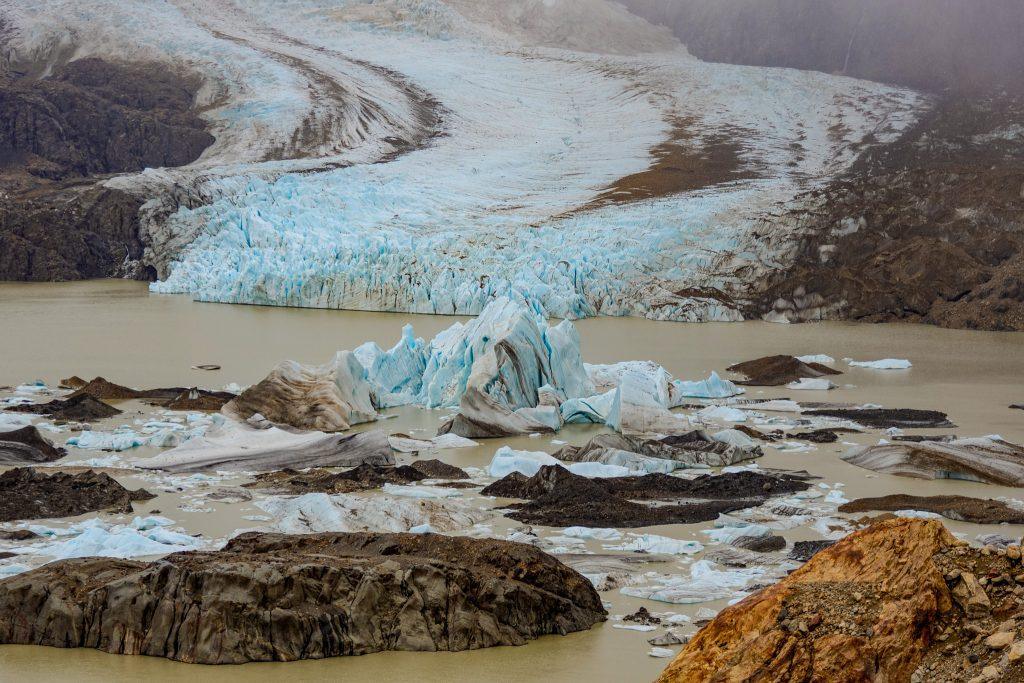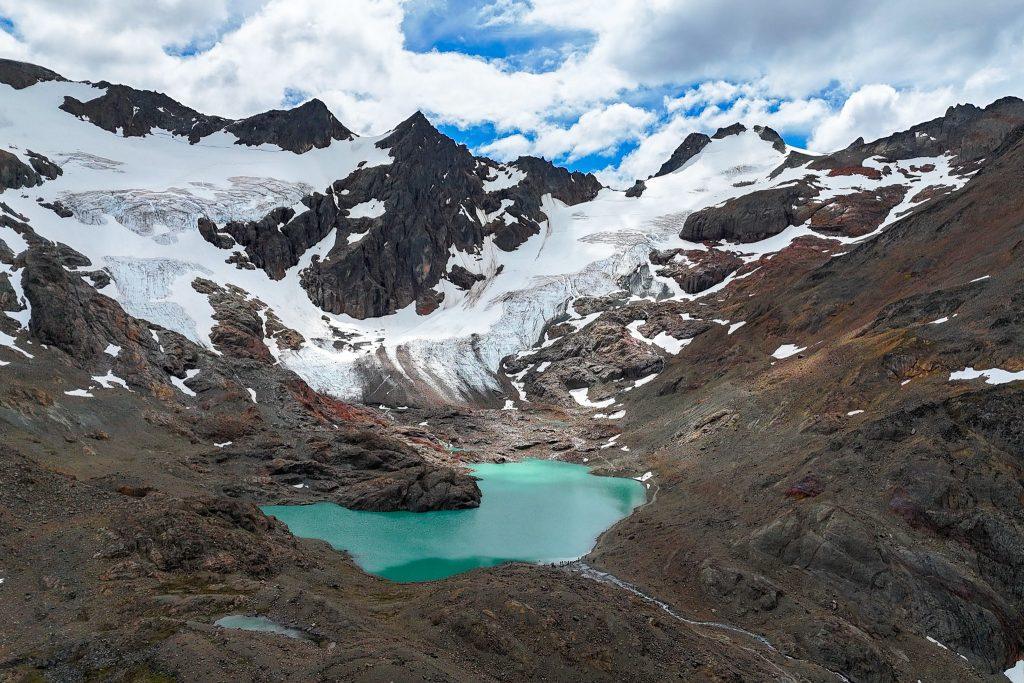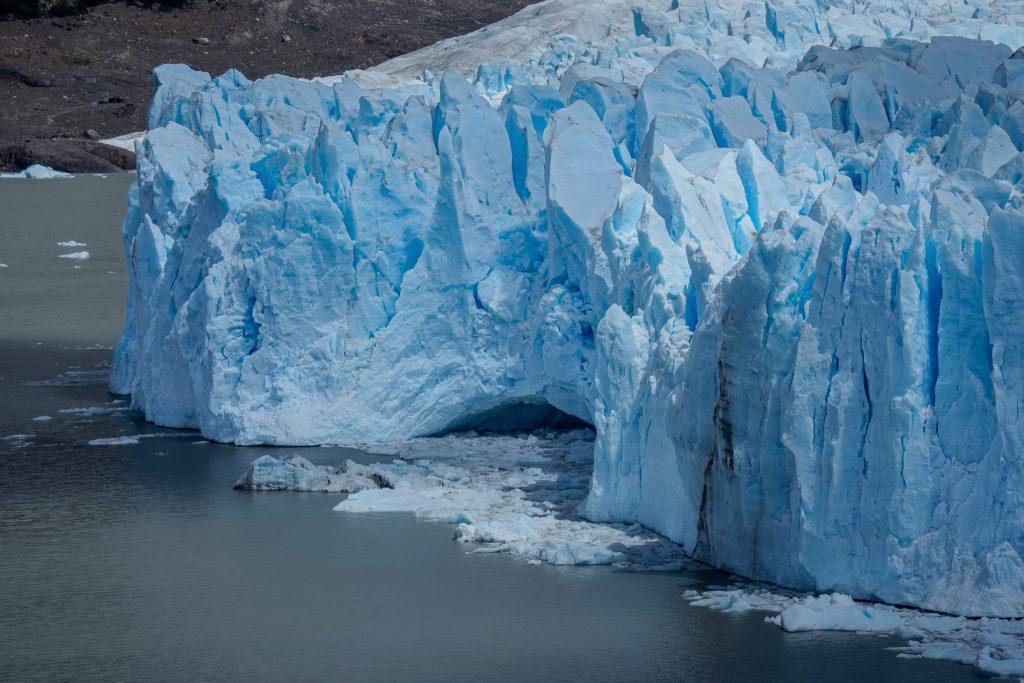Article by Damien Lafon – Photography by Svetlana Markoff
Located between 41° and 56° south latitude, the glaciers of Patagonia rank among the world’s largest ice reserves outside the polar regions. These frozen masses part of the Northern and Southern Icefields play a vital role in the water cycle, climate regulation, and sea level balance. Yet, for several decades, they’ve been retreating rapidly, impacted by rising temperatures and shifting atmospheric systems.

Current Status of Patagonian Glaciers
Southern Patagonia’s glaciers such as Perito Moreno, Upsala, and Jorge Montt are closely studied by glaciologists. The Southern Icefield alone spans nearly 13,000 km². Although Perito Moreno has remained relatively stable, most other glaciers have shrunk significantly.
Since the 1940s, cumulative melting has surpassed 1,300 gigatonnes. The rate of loss has sharply accelerated since the early 2000s. A study published by Nature in 2024 confirmed that surface runoff, caused by warmer temperatures, is now the main driver of glacier melt. Smaller, land-terminating glaciers those under 5 km² are retreating faster than their larger marine-terminating counterparts. For example, the Upsala Glacier has retreated over 10 km since the early 20th century.
Historical Dynamics and Trends
Since the end of the Little Ice Age (circa 1870), Patagonia’s glaciers have lost more than 2,000 km² of surface area. The retreat rate accelerated significantly between 1986 and 2016. Between 2001 and 2011, the average annual loss was 0.22% of total glacial surface. Some glaciers show unusual behavior. The Brüggen Glacier, for instance, advanced by 5 km between 1945 and 1976 in a phenomenon known as a “surge.” However, such events remain rare.
The Overlooked Glaciers of Chile
Beyond Argentina’s well-known glaciers, several Chilean glaciers like San Rafael, Exploradores, and Gualas deserve more attention. San Rafael, accessible only by boat or plane, calves directly into the ocean, forming icebergs in its namesake lagoon. These glaciers are closely monitored, as their meltwater feeds powerful coastal rivers and influences marine ecosystems. The Exploradores Glacier, near the Carretera Austral, is shrinking at an alarming pace. It has lost about 15% of its surface area in just 30 years. Such cases underscore the urgency of studying smaller Andean glaciers, often overlooked but crucial for local watersheds.
Did You Know?
Over 245 potentially active volcanoes lie beneath Patagonia’s glaciers. Their activity could be reawakened by pressure release caused by glacial melt.

Environmental and Societal Impacts
Glacial melting directly contributes to global sea level rise, with Patagonian glaciers playing a significant role. Their disappearance also threatens freshwater resources relied upon by Andean communities. This poses risks for agriculture, hydropower generation, and local biodiversity. From a geological perspective, isostatic rebound caused by the loss of glacial mass can lead to landslides or sudden glacial outburst floods.
Impacts on Indigenous Communities
Indigenous peoples such as the Mapuche, Tehuelche, and Kawésqar are directly affected by these changes. Glacier retreat alters ancestral territories, disrupts water sources, and changes wildlife patterns. In some areas, sacred sites tied to ice have vanished. For these communities, glaciers are cultural, spiritual, and territorial markers. The ongoing changes are forcing some to adapt their livelihoods or even relocate. These realities highlight the importance of integrating Indigenous knowledge into local climate policies.
Monitoring Technologies and Scientific Research
Today, scientists use high-resolution satellites, in-situ sensors, and drones to monitor glacier dynamics. These tools help detect mass loss, track flow velocity, and identify new glacial lakes. 3D modeling of glaciated surfaces helps forecast flooding risks and melting scenarios. Glaciological data are also incorporated into regional climate models to better understand feedback mechanisms. Research centers in Chile and Argentina are working alongside international institutions to build long-term monitoring strategies.
Did You Know?
Although snowfall has remained relatively stable, surface melting has more than tripled since the 1940s.

Future Scenarios and Necessary Action
Climate projections suggest melting will accelerate if global temperatures rise beyond 2°C. Conversely, limiting warming to 1.5°C would significantly reduce future ice loss. Scientists recommend strengthening both satellite and field-based observations. It’s also vital to incorporate glacier behavior into regional climate models. Finally, education, glacial region conservation, and coordinated climate action remain key strategies to slow this rapid loss.
What Lies Ahead?
Majestic and immense as they may be, the glaciers of Patagonia are now in serious jeopardy. Their swift retreat impacts not only local ecosystems but also contributes to global climate disruptions. For researchers, the priorities are clear: drastically cut greenhouse gas emissions and improve access to accurate data. Only swift, collective action can protect these frozen records of our past crucial to the future of life on Earth.
Follow us on Instagram and Facebook to keep up to date and support our media at www.helloasso.com
This article may interest you : Jökulsárlón, Iceland’s glacial lagoon, carved by icebergs
